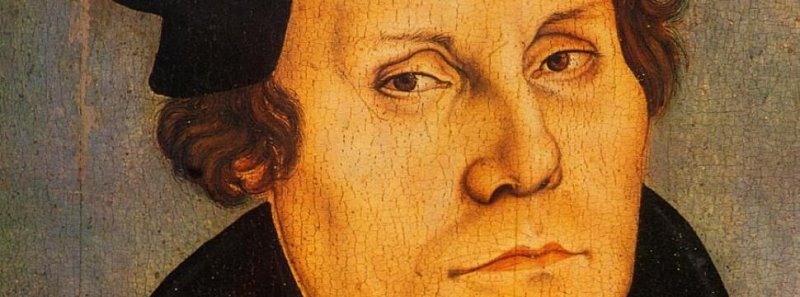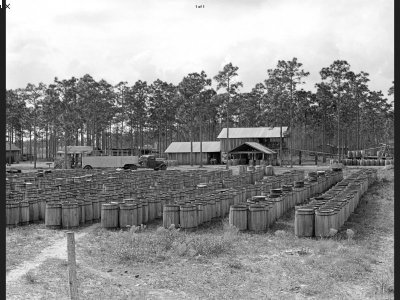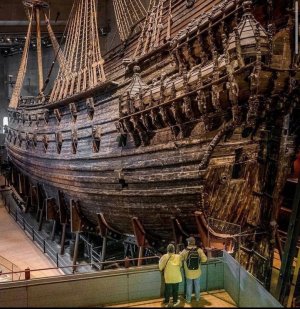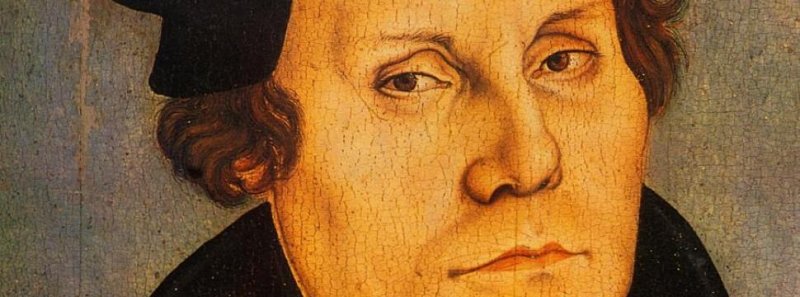You are using an out of date browser. It may not display this or other websites correctly.
You should upgrade or use an alternative browser.
You should upgrade or use an alternative browser.
History, anything goes, including pictures
- Thread starter mellowyellow
- Start date
RnR
Member
- Location
- Gold Coast, Queensland
What a saga, one which led to remarkable changes.View attachment 153540
March 7
1530 English King Henry VIII’s's divorce request is denied by the Pope which changed the course of history.
Once titled "defender" of the Catholic church, Henry's personal circumstances would drive him to break his Catholic ties and found the Church of England.
RnR
Member
- Location
- Gold Coast, Queensland
7 March 1671 – Rob Roy MacGregor, Scottish outlaw is born.
Along with many Highland clansmen, at the age of eighteen Rob Roy together with his father joined the Jacobite rising of 1689 to support the Stuart King James II who had fled Britain. Rob’s father was taken to jail, where he was held on treason charges for two years. In 1716 Rob Roy moved to Glen Shira for a short time and lived under the protection of John Campbell, 2nd Duke of Argyll. Argyll negotiated an amnesty and protection for Rob and granted him permission to build a house in the Glen for the surrendering up of weapons.
Book, 1817. Portrait engraving of Rob Roy, circa 1820s. 1995 film.

As a result, Rob Roy became a well-known and respected cattleman—this was a time when cattle rustling and selling protection against theft were commonplace means of earning a living. Rob Roy borrowed a large sum to increase his own cattle herd, but owing to the disappearance of his chief herder, who was entrusted with the money to bring the cattle back, Rob Roy lost his money and cattle, and defaulted on his loan. As a result, he was branded an outlaw, and his wife and family were evicted from their house at Inversnaid, which was then burned down. After his principal creditor, James Graham, 1st Duke of Montrose seized his lands, Rob Roy waged a private blood feud against the Duke until 1722, when he was forced to surrender and was then imprisoned.
Along with many Highland clansmen, at the age of eighteen Rob Roy together with his father joined the Jacobite rising of 1689 to support the Stuart King James II who had fled Britain. Rob’s father was taken to jail, where he was held on treason charges for two years. In 1716 Rob Roy moved to Glen Shira for a short time and lived under the protection of John Campbell, 2nd Duke of Argyll. Argyll negotiated an amnesty and protection for Rob and granted him permission to build a house in the Glen for the surrendering up of weapons.
Book, 1817. Portrait engraving of Rob Roy, circa 1820s. 1995 film.

As a result, Rob Roy became a well-known and respected cattleman—this was a time when cattle rustling and selling protection against theft were commonplace means of earning a living. Rob Roy borrowed a large sum to increase his own cattle herd, but owing to the disappearance of his chief herder, who was entrusted with the money to bring the cattle back, Rob Roy lost his money and cattle, and defaulted on his loan. As a result, he was branded an outlaw, and his wife and family were evicted from their house at Inversnaid, which was then burned down. After his principal creditor, James Graham, 1st Duke of Montrose seized his lands, Rob Roy waged a private blood feud against the Duke until 1722, when he was forced to surrender and was then imprisoned.
RnR
Member
- Location
- Gold Coast, Queensland
7 March 1876 – Alexander Graham Bell is granted a patent for the telephone.
Bell’s patent 174,465, was issued to Bell on 7 March 1876, by the U.S. Patent Office. Bell’s patent covered “the method of, and apparatus for, transmitting vocal or other sounds telegraphically … by causing electrical undulations, similar in form to the vibrations of the air accompanying the said vocal or other sound”. Bell returned to Boston the same day and the next day resumed work, drawing in his notebook a diagram similar to that in Gray’s patent caveat.
Alexander Graham Bell’s telephone patent drawing, 7 March 1876. Newspaper article.

Bell’s patent 174,465, was issued to Bell on 7 March 1876, by the U.S. Patent Office. Bell’s patent covered “the method of, and apparatus for, transmitting vocal or other sounds telegraphically … by causing electrical undulations, similar in form to the vibrations of the air accompanying the said vocal or other sound”. Bell returned to Boston the same day and the next day resumed work, drawing in his notebook a diagram similar to that in Gray’s patent caveat.
Alexander Graham Bell’s telephone patent drawing, 7 March 1876. Newspaper article.

RnR
Member
- Location
- Gold Coast, Queensland
7 March 1892 – Norman McAlister Gregg, the Australian opthalmologist who discovered that German measles in pregnancy could cause birth defects in children, is born.
When World War II began, Gregg was a paediatric ophthalmologist, at a time when most doctors had joined the army and he was one of few eye doctors in Sydney. Gregg noticed a high incidence of congenital cataracts in infants arriving at his surgery – two to three times the normal rate that would be expected from hereditary factors. He overheard a conversation between several mothers whose babies had cataracts, in which they mentioned that they had suffered from German measles (rubella) during pregnancy. Investigating the medical records of children with similar conditions, Gregg discovered that out of 78 affected children, 68 had been exposed to rubella in utero. There had been an outbreak of rubella and meningitis in Australian army camps in 1941, which had been transmitted to the wider community when the men returned to their families.
Norman Gregg in WW1 military uniform, University of Sydney. Dr. Gregg, left, receiving an honorary Doctor of Science degree from the University of Sydney in 1952, University of Sydney.

Whilst Gregg’s findings were met with praise in Australia, internationally his peers were not so convinced. British medical journal The Lancet wrote that he had failed to adequately prove his case, and it was not until Professor Oliver Lancaster of the University of Sydney proved the association between the rubella virus and congenital syndromes in infants was significant, that his research was accepted around the world.
When World War II began, Gregg was a paediatric ophthalmologist, at a time when most doctors had joined the army and he was one of few eye doctors in Sydney. Gregg noticed a high incidence of congenital cataracts in infants arriving at his surgery – two to three times the normal rate that would be expected from hereditary factors. He overheard a conversation between several mothers whose babies had cataracts, in which they mentioned that they had suffered from German measles (rubella) during pregnancy. Investigating the medical records of children with similar conditions, Gregg discovered that out of 78 affected children, 68 had been exposed to rubella in utero. There had been an outbreak of rubella and meningitis in Australian army camps in 1941, which had been transmitted to the wider community when the men returned to their families.
Norman Gregg in WW1 military uniform, University of Sydney. Dr. Gregg, left, receiving an honorary Doctor of Science degree from the University of Sydney in 1952, University of Sydney.

Whilst Gregg’s findings were met with praise in Australia, internationally his peers were not so convinced. British medical journal The Lancet wrote that he had failed to adequately prove his case, and it was not until Professor Oliver Lancaster of the University of Sydney proved the association between the rubella virus and congenital syndromes in infants was significant, that his research was accepted around the world.
mellowyellow
Well-known Member
Not available in my country OhioboyMany famous past voices are unknown to many. Here is Bell's.
Many famous past voices are unknown to many. Here is Bell's.
Is this the one...
mellowyellow
Well-known Member
mellowyellow
Well-known Member
mellowyellow
Well-known Member
8 March 1817

On 8 March 1817, the Buttonwood Agreement formally became the New York Stock & Exchange Board, with rented rooms at 40 Wall Street, a new set of rules and a constitution. The opening of the Erie Canal and the arrival of the railways in America from the 1830s onwards brought a surge in business to the exchange

On 8 March 1817, the Buttonwood Agreement formally became the New York Stock & Exchange Board, with rented rooms at 40 Wall Street, a new set of rules and a constitution. The opening of the Erie Canal and the arrival of the railways in America from the 1830s onwards brought a surge in business to the exchange
RnR
Member
- Location
- Gold Coast, Queensland
Depiction of the brokers under the buttonwood tree.8 March 1817
View attachment 153643
On 8 March 1817, the Buttonwood Agreement formally became the New York Stock & Exchange Board, with rented rooms at 40 Wall Street, a new set of rules and a constitution. The opening of the Erie Canal and the arrival of the railways in America from the 1830s onwards brought a surge in business to the exchange

In 1793 The Tontine Coffee House, in Wall Street, was dedicated as the New Yorkers exchange. Before the construction of the Tontine Coffee House the brokers of the Buttonwood Agreement and others did trade at the Merchant’s Coffee House just across the road. The Tontine Coffee House was built by a group of brokers to serve as a meeting place for trade and correspondence.
Tontine Coffee House, New York City, circa 1820.

RnR
Member
- Location
- Gold Coast, Queensland
8 March 1859 – Kenneth Grahame, Scottish-English banker and author of Wind in the Willows is born.
Kenneth Grahame was a Scottish writer, most famous for The Wind in the Willows published in 1908, one of the classics of children’s literature. Kenneth Grahame was born in Edinburgh, Scotland. When he was five, his mother died of puerperal fever, and his father, who had a drinking problem, gave over care of the children to their maternal grandmother in Cookham Dean in Berkshire. There the children lived in a spacious, if dilapidated, home, called The Mount, on spacious grounds in idyllic surroundings. This ambiance, particularly Quarry Wood and the River Thames, is believed, by Peter Green, Grahame's biographer, to have inspired the setting for The Wind in the Willows.
Drawing of Grahame by John Singer Sargent. The Wind in the Willows, cover and illustration.

While still a young man in his 20s, Grahame began to publish light stories in London periodicals such as the St. James Gazette. These were followed by Dream Days in 1898, which contains The Reluctant Dragon. There is a ten-year gap between Grahame’s penultimate book and the publication of his triumph, The Wind in the Willows. During this decade, Grahame became a father. The wayward, headstrong nature he saw in his little son Alastair he transformed into the swaggering Mr. Toad, one of its four principal characters. The character in the book known as Ratty was inspired by his good friend, and writer, Sir Arthur Quiller-Couch. Despite the success of The Wind in the Willows, Grahame never attempted a sequel.
Kenneth Grahame was a Scottish writer, most famous for The Wind in the Willows published in 1908, one of the classics of children’s literature. Kenneth Grahame was born in Edinburgh, Scotland. When he was five, his mother died of puerperal fever, and his father, who had a drinking problem, gave over care of the children to their maternal grandmother in Cookham Dean in Berkshire. There the children lived in a spacious, if dilapidated, home, called The Mount, on spacious grounds in idyllic surroundings. This ambiance, particularly Quarry Wood and the River Thames, is believed, by Peter Green, Grahame's biographer, to have inspired the setting for The Wind in the Willows.
Drawing of Grahame by John Singer Sargent. The Wind in the Willows, cover and illustration.

While still a young man in his 20s, Grahame began to publish light stories in London periodicals such as the St. James Gazette. These were followed by Dream Days in 1898, which contains The Reluctant Dragon. There is a ten-year gap between Grahame’s penultimate book and the publication of his triumph, The Wind in the Willows. During this decade, Grahame became a father. The wayward, headstrong nature he saw in his little son Alastair he transformed into the swaggering Mr. Toad, one of its four principal characters. The character in the book known as Ratty was inspired by his good friend, and writer, Sir Arthur Quiller-Couch. Despite the success of The Wind in the Willows, Grahame never attempted a sequel.
RnR
Member
- Location
- Gold Coast, Queensland
8 March 1862 – American Civil War: The Naval Battle of Hampton Roads, the first meeting in combat of ironclad warships, begins.
From the standpoint of naval development, the Battle of Hampton Roads or the Battle of Ironclads, was the most noted and arguably most important naval battle of the American Civil War. It was fought over two days, March 8–9, 1862, in Hampton Roads, a roadstead in Virginia where the Elizabeth and Nansemond rivers meet the James River just before it enters Chesapeake Bay.
“The Monitor and Merrimac: The First Fight Between Ironclads”, a chromolithograph of the Battle of Hampton Roads, produced by Louis Prang & Co., Boston.

The USS Monitor was an iron-hulled steamship and the first ironclad warship commissioned by the Union Navy. On the opposing Confederate fleet, was the ironclad ram CSS Virginia, built from the remnants of the USS Merrimack.
The major significance of the battle is that it was the first meeting in combat of ironclad warships. The confrontation received worldwide attention and had immediate effects on navies around the world. The preeminent naval powers, Great Britain and France, halted further construction of wooden-hulled ships, and others followed suit.
From the standpoint of naval development, the Battle of Hampton Roads or the Battle of Ironclads, was the most noted and arguably most important naval battle of the American Civil War. It was fought over two days, March 8–9, 1862, in Hampton Roads, a roadstead in Virginia where the Elizabeth and Nansemond rivers meet the James River just before it enters Chesapeake Bay.
“The Monitor and Merrimac: The First Fight Between Ironclads”, a chromolithograph of the Battle of Hampton Roads, produced by Louis Prang & Co., Boston.

The USS Monitor was an iron-hulled steamship and the first ironclad warship commissioned by the Union Navy. On the opposing Confederate fleet, was the ironclad ram CSS Virginia, built from the remnants of the USS Merrimack.
The major significance of the battle is that it was the first meeting in combat of ironclad warships. The confrontation received worldwide attention and had immediate effects on navies around the world. The preeminent naval powers, Great Britain and France, halted further construction of wooden-hulled ships, and others followed suit.
mellowyellow
Well-known Member
mellowyellow
Well-known Member
March 9
1522 Martin Luther begins preaching his "Invocavit Sermons" in the German city of Wittenberg, reminding citizens to trust God's word rather than violence and thus helping bring to a close the revolutionary stage of the Reformation

In 1517, an obscure German theologian by the name of Martin Luther published a document criticizing the Catholic selling of 'indulgences', or actions performed to reduce the amount of punishment for sin.
Over the next 150 years, Europe split between the Catholic faith of the Roman popes and the new, reformed religion known as Protestantism, of which there were many branches. Northern Europe switched to Protestant, Southern Europe remained Catholic, and Central Europe became the site of the devastating Thirty Years' War.
For his writings and teachings, Luther was put on trial for heresy and in 1521 was excommunicated by the Pope. He would continue to teach and write widely on religion, including by translating the Bible into German vernacular and publishing numerous hymns. He would die in 1546, near the peak of the Reformation itself. Today, more than 900 million people adhere to the Protestant faith.
1522 Martin Luther begins preaching his "Invocavit Sermons" in the German city of Wittenberg, reminding citizens to trust God's word rather than violence and thus helping bring to a close the revolutionary stage of the Reformation

In 1517, an obscure German theologian by the name of Martin Luther published a document criticizing the Catholic selling of 'indulgences', or actions performed to reduce the amount of punishment for sin.
Over the next 150 years, Europe split between the Catholic faith of the Roman popes and the new, reformed religion known as Protestantism, of which there were many branches. Northern Europe switched to Protestant, Southern Europe remained Catholic, and Central Europe became the site of the devastating Thirty Years' War.
For his writings and teachings, Luther was put on trial for heresy and in 1521 was excommunicated by the Pope. He would continue to teach and write widely on religion, including by translating the Bible into German vernacular and publishing numerous hymns. He would die in 1546, near the peak of the Reformation itself. Today, more than 900 million people adhere to the Protestant faith.
Attachments
SetWave
Well-known Member
- Location
- Monterey Bay
Now, this may offend some and is definitely bizarre but, the television show "Drunk History" covers some true and fascination events. I sure would have payed more attention in school had history classes been as entertaining.
RnR
Member
- Location
- Gold Coast, Queensland
Looks amazing, thanks Mellowyellow.The Vasa ship capsized and sank in Stockholm 1628. After 333 years on the sea bed the mighty warship was salvaged and the voyage could continue. Today Vasa is the world's best preserved 17th century ship and the most visited museum in Scandinavia.
View attachment 153764
RnR
Member
- Location
- Gold Coast, Queensland
9 March 1796 – Napoléon Bonaparte marries his first wife, Joséphine de Beauharnais.
Joséphine was the first wife of Napoleon I, and thus the first Empress of the French. She was born in Martinique to a wealthy white Creole family that owned a sugarcane plantation. Joséphine had affairs with several leading political figures, including Paul François Jean Nicolas Barras. In 1795, she met Napoléon Bonaparte, six years her junior, and became his mistress. In January 1796, Napoléon Bonaparte proposed to her and they married on 9 March 1796. When after a few years it became clear she could not have a child, they divorced.
Joséphine in 1804. Her Coat of Arms.

Joséphine died in Rueil-Malmaison on 29 May 1814. Napoleon learned of her death via a French journal while in exile on Elba, and stayed locked in his room for two days, refusing to see anyone. Despite numerous affairs, eventual divorce, and remarriage, the Emperor’s last words on his deathbed at St. Helena were: “France, the Army, the Head of the Army, Joséphine.”
Joséphine was the first wife of Napoleon I, and thus the first Empress of the French. She was born in Martinique to a wealthy white Creole family that owned a sugarcane plantation. Joséphine had affairs with several leading political figures, including Paul François Jean Nicolas Barras. In 1795, she met Napoléon Bonaparte, six years her junior, and became his mistress. In January 1796, Napoléon Bonaparte proposed to her and they married on 9 March 1796. When after a few years it became clear she could not have a child, they divorced.
Joséphine in 1804. Her Coat of Arms.

Joséphine died in Rueil-Malmaison on 29 May 1814. Napoleon learned of her death via a French journal while in exile on Elba, and stayed locked in his room for two days, refusing to see anyone. Despite numerous affairs, eventual divorce, and remarriage, the Emperor’s last words on his deathbed at St. Helena were: “France, the Army, the Head of the Army, Joséphine.”
RnR
Member
- Location
- Gold Coast, Queensland
9 March 1959 – The Barbie doll makes its debut at the American International Toy Fair in New York.
Ruth Handler watched her daughter Barbara play with paper dolls, and noticed that she often enjoyed giving them adult roles. At the time, most children’s toy dolls were representations of infants. During a trip to Europe in 1956 with her children Barbara and Kenneth, Ruth Handler came across a German toy doll called Bild Lilli. The adult-figured doll was exactly what Handler had in mind, so she purchased three of them. Upon her return to the United States, Handler redesigned the doll and the doll was given a new name, Barbie, after the Handler’s daughter Barbara.
The first Barbie doll was introduced in both blonde and brunette on 9 March 1959.

Realising that there could be a gap in the market, Handler suggested the idea of an adult-bodied doll to her husband Elliot, a co-founder of the Mattel toy company. He was unenthusiastic about the idea, as were Mattel’s directors. However, the doll made its debut at the American International Toy Fair in New York on 9 March 1959. Since then, Mattel has sold over a billion Barbie dolls, making it the company’s largest and most profitable line.
Ruth Handler watched her daughter Barbara play with paper dolls, and noticed that she often enjoyed giving them adult roles. At the time, most children’s toy dolls were representations of infants. During a trip to Europe in 1956 with her children Barbara and Kenneth, Ruth Handler came across a German toy doll called Bild Lilli. The adult-figured doll was exactly what Handler had in mind, so she purchased three of them. Upon her return to the United States, Handler redesigned the doll and the doll was given a new name, Barbie, after the Handler’s daughter Barbara.
The first Barbie doll was introduced in both blonde and brunette on 9 March 1959.

Realising that there could be a gap in the market, Handler suggested the idea of an adult-bodied doll to her husband Elliot, a co-founder of the Mattel toy company. He was unenthusiastic about the idea, as were Mattel’s directors. However, the doll made its debut at the American International Toy Fair in New York on 9 March 1959. Since then, Mattel has sold over a billion Barbie dolls, making it the company’s largest and most profitable line.
Pappy
Living the Dream
Orange County's turpentine industry exploited laborers and ravaged the landscape for several decades in the late 19th and early 20th centuries.
Extracting turpentine from pine trees and processing it in backwoods stills was Florida's second-largest industry - after citrus - before the turn of the century. But it exacted a price on people and the environment unlike any other business.
A hard, sticky amber rosin, sometimes called pitch, was made from the trees' turpentine gum, or oleoresin. It was used to preserve ropes and rigging on sailing ships and to caulk the seams between timbers in the ships' hulls. For this reason, turpentine products were called naval stores.
After ships were made of steel and had engines, rosin was used in the manufacture of soap and other products and to wax bowstrings for musical instruments. Spirits of turpentine, which was separated from the pitch in stills, was - and still is - used as a paint thinner and solvent.

Extracting turpentine from pine trees and processing it in backwoods stills was Florida's second-largest industry - after citrus - before the turn of the century. But it exacted a price on people and the environment unlike any other business.
A hard, sticky amber rosin, sometimes called pitch, was made from the trees' turpentine gum, or oleoresin. It was used to preserve ropes and rigging on sailing ships and to caulk the seams between timbers in the ships' hulls. For this reason, turpentine products were called naval stores.
After ships were made of steel and had engines, rosin was used in the manufacture of soap and other products and to wax bowstrings for musical instruments. Spirits of turpentine, which was separated from the pitch in stills, was - and still is - used as a paint thinner and solvent.

mellowyellow
Well-known Member
Love learning new things like this every day, thanks Pappy.Orange County's turpentine industry exploited laborers and ravaged the landscape for several decades in the late 19th and early 20th centuries.
Extracting turpentine from pine trees and processing it in backwoods stills was Florida's second-largest industry - after citrus - before the turn of the century. But it exacted a price on people and the environment unlike any other business.
A hard, sticky amber rosin, sometimes called pitch, was made from the trees' turpentine gum, or oleoresin. It was used to preserve ropes and rigging on sailing ships and to caulk the seams between timbers in the ships' hulls. For this reason, turpentine products were called naval stores.
After ships were made of steel and had engines, rosin was used in the manufacture of soap and other products and to wax bowstrings for musical instruments. Spirits of turpentine, which was separated from the pitch in stills, was - and still is - used as a paint thinner and solvent.
View attachment 153910
I finally remembered this web site I used to read often. Very interesting historical documents reviewed, 100 great ones.
I like the one that has a copy photo of the check that purchased Alaska.
https://www.ourdocuments.gov/doc.php?flash=false&doc=41
https://www.ourdocuments.gov/content.php?flash=false&page=milestone
I like the one that has a copy photo of the check that purchased Alaska.
https://www.ourdocuments.gov/doc.php?flash=false&doc=41
https://www.ourdocuments.gov/content.php?flash=false&page=milestone
Last edited:






